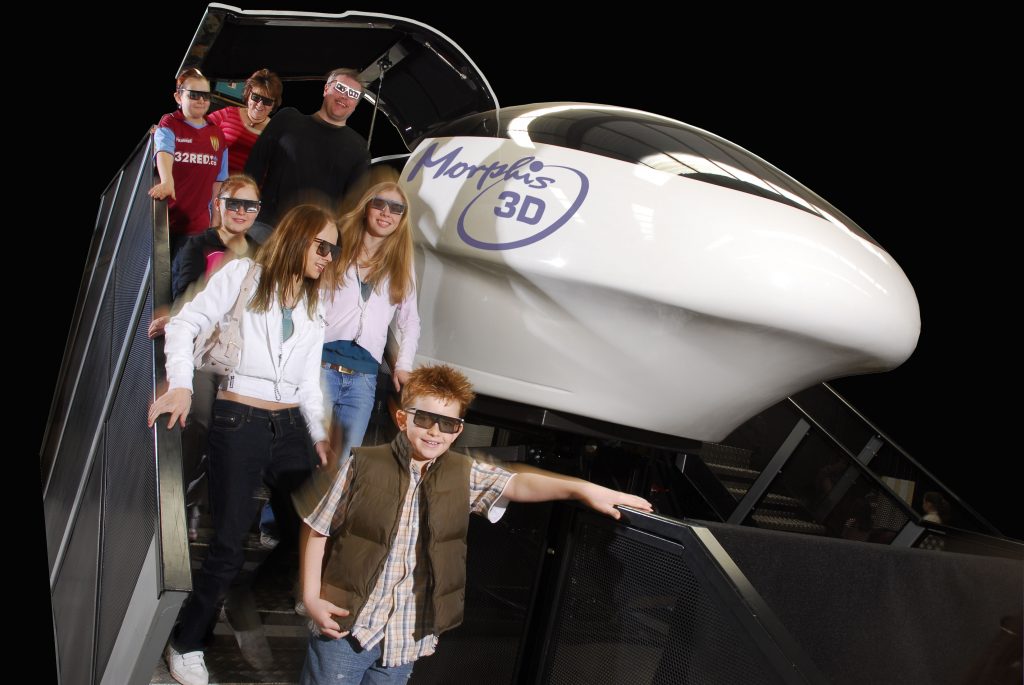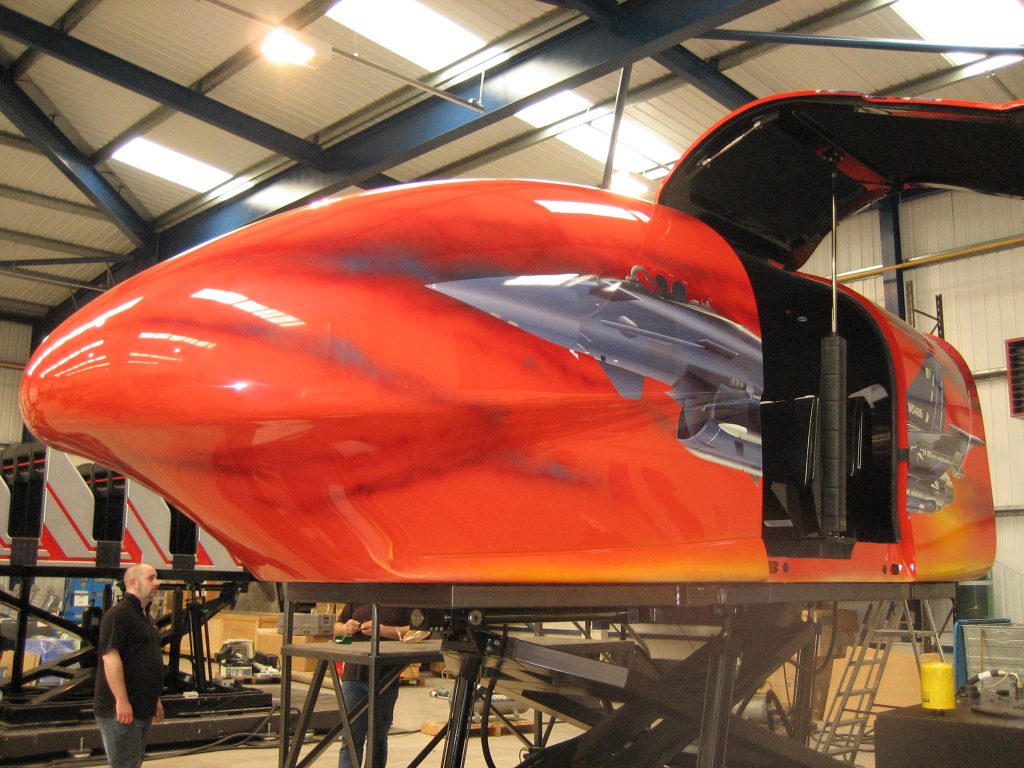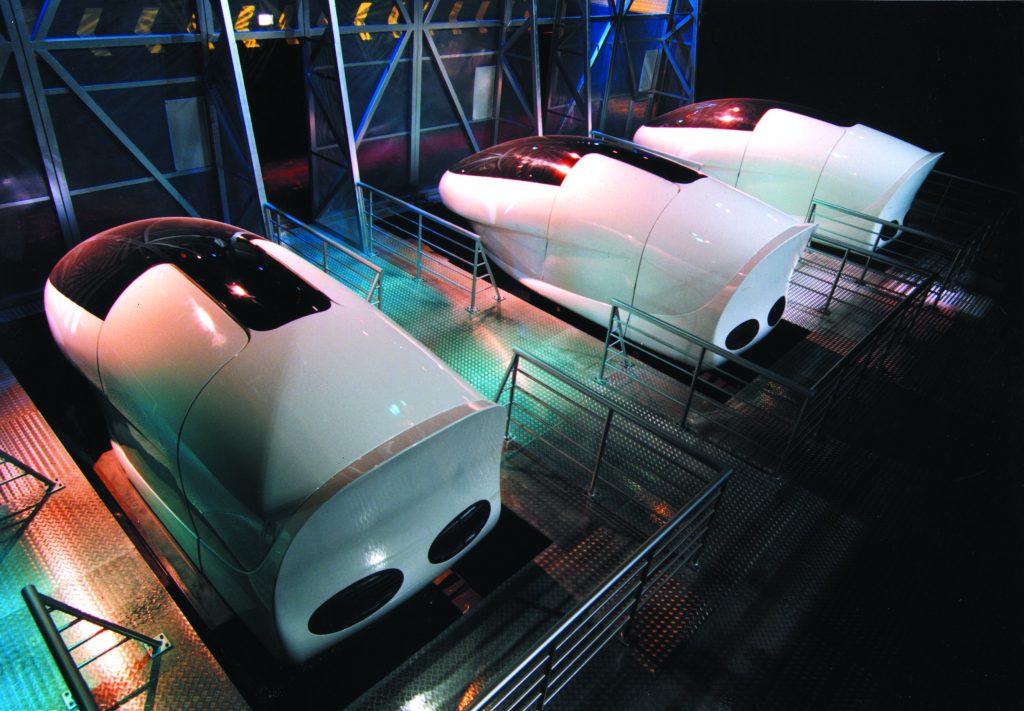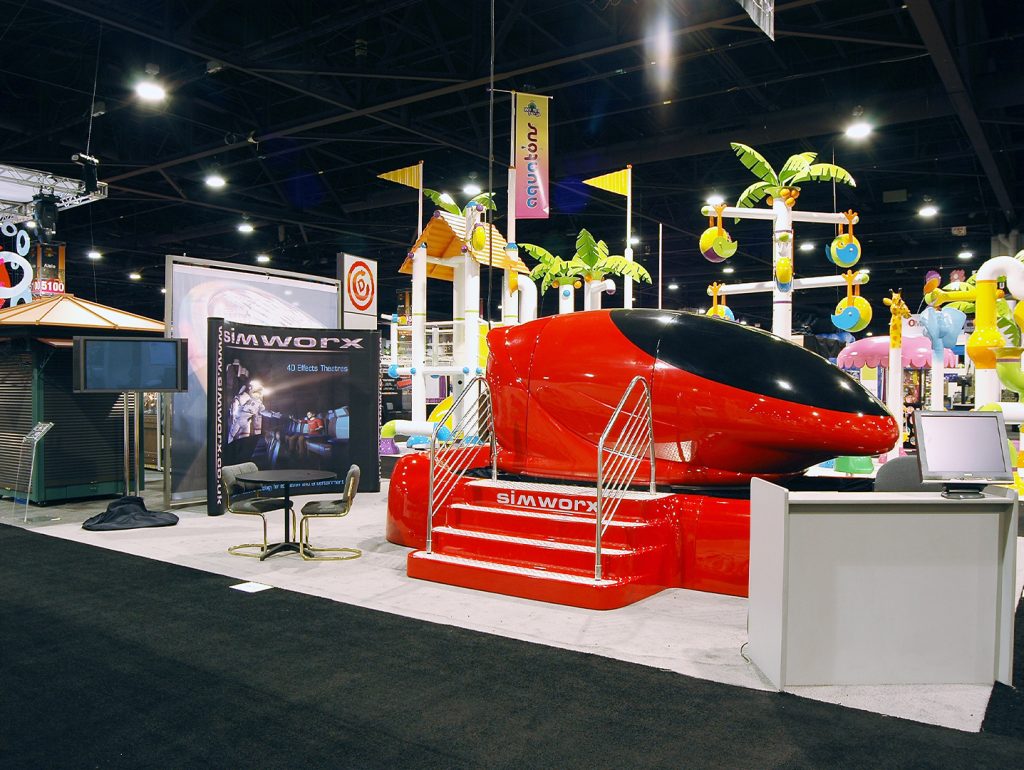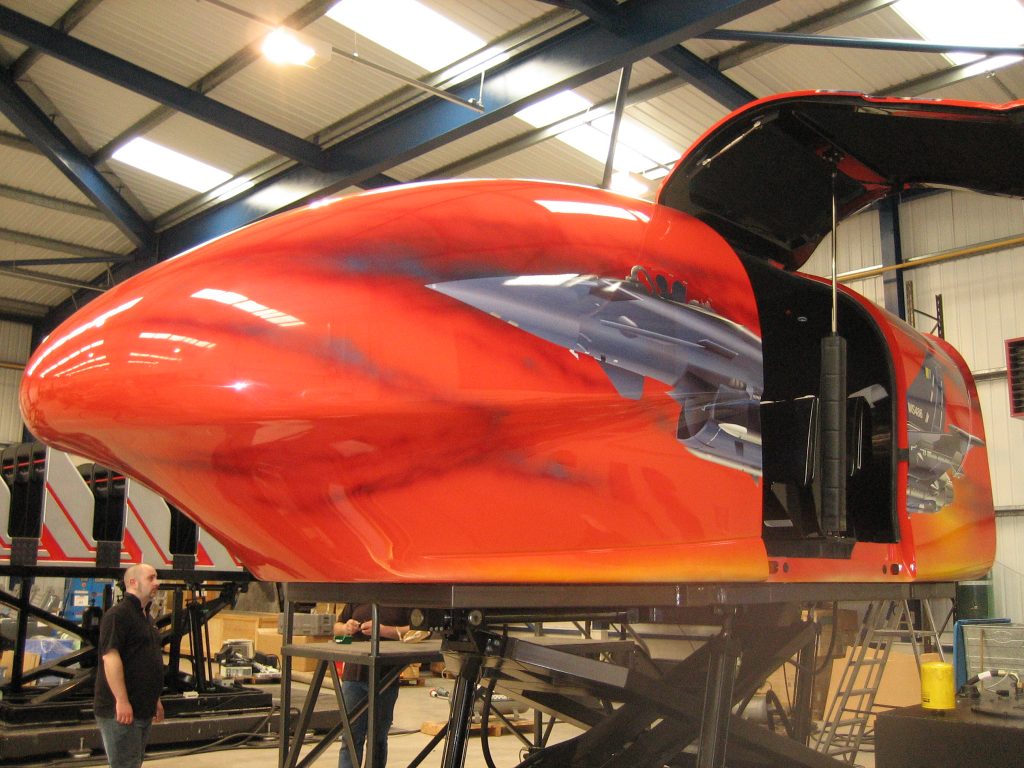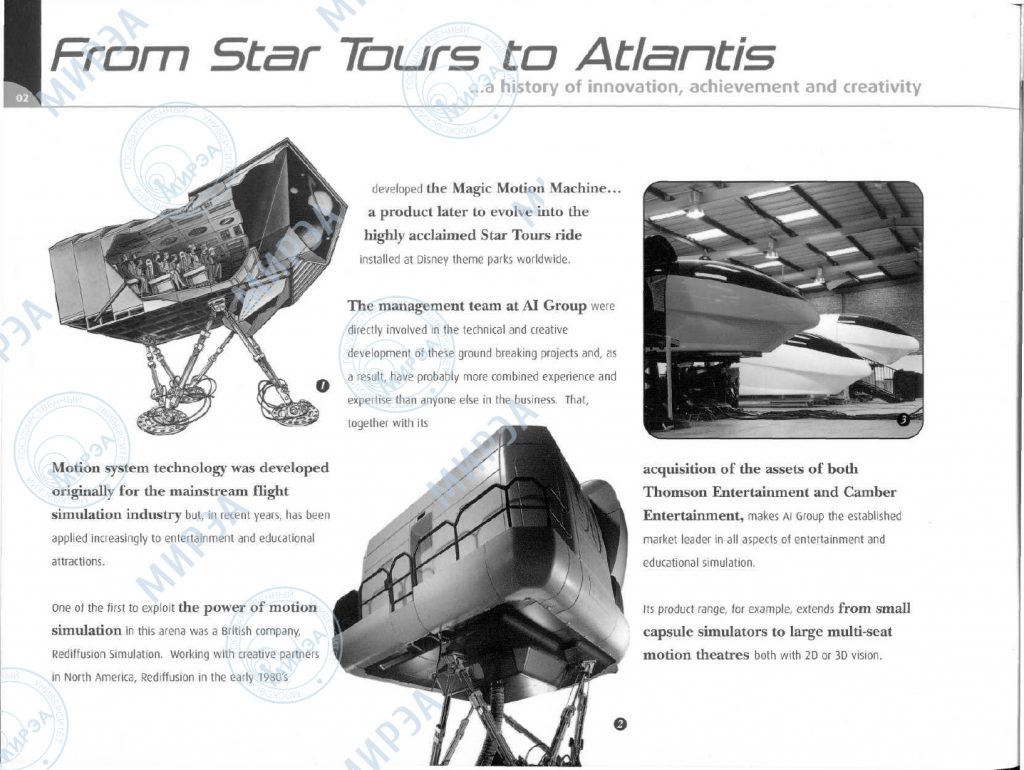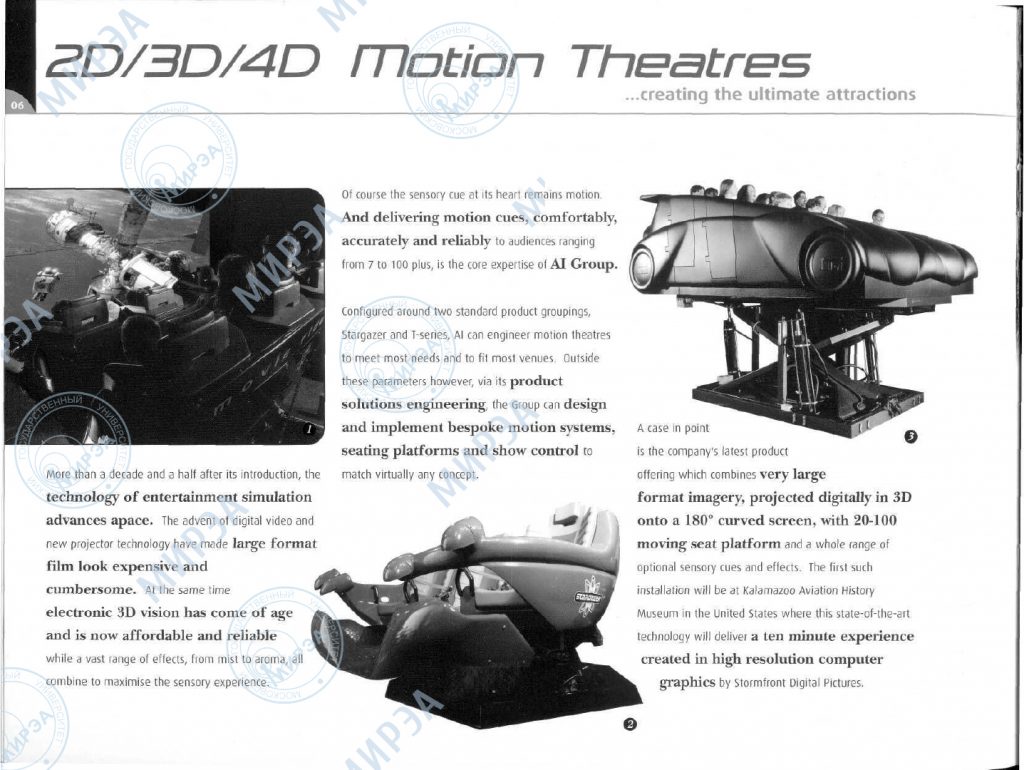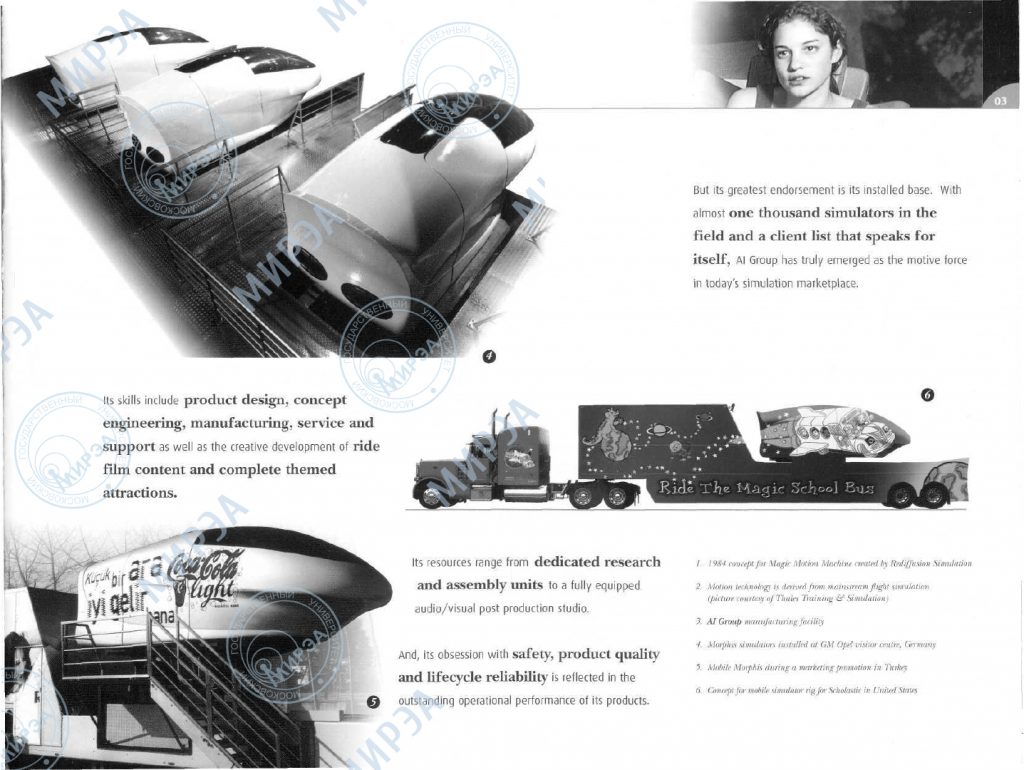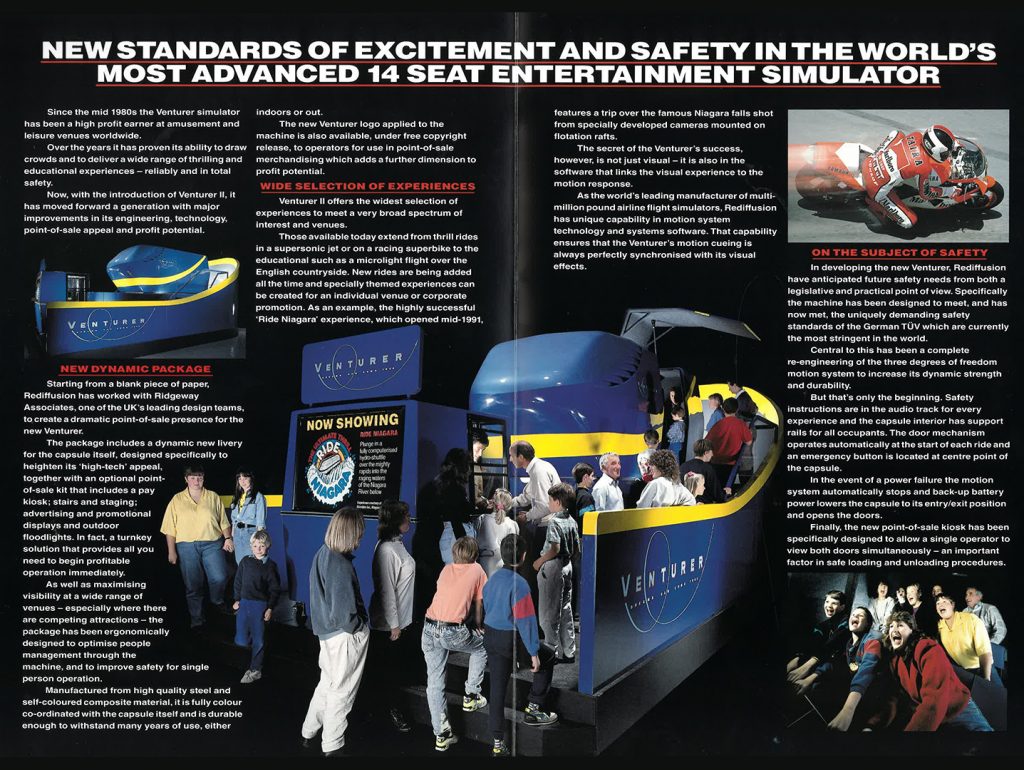Ever wonder how Simworx, a global theme park ride manufacturer, came to be, in the West Midlands of England?
Well strap in, because we’re about to take you on a whirlwind history lesson on Simworx.
Simworx was founded by our CEO and COO, Terry Monkton and Andy Roberts back in 2005, but our history goes further back than that.
This past weekend was Star Tour’s 34th Birthday, and you may not be aware but the famous Disney attraction plays a part in our history too.
Simworx stems from Motion system technology that was developed originally for the mainstream flight simulation industry. This technology began being applied to entertainment and educational attractions, and one of the first companies to exploit the power of motion simulation was British company, Rediffusion Simulation. Rediffusion worked with creative partners in North America back in the 1980s to develop the ‘Magic Motion Machine’ which later evolved into the highly acclaimed Star Tours Ride installed at Disney Theme Parks worldwide.
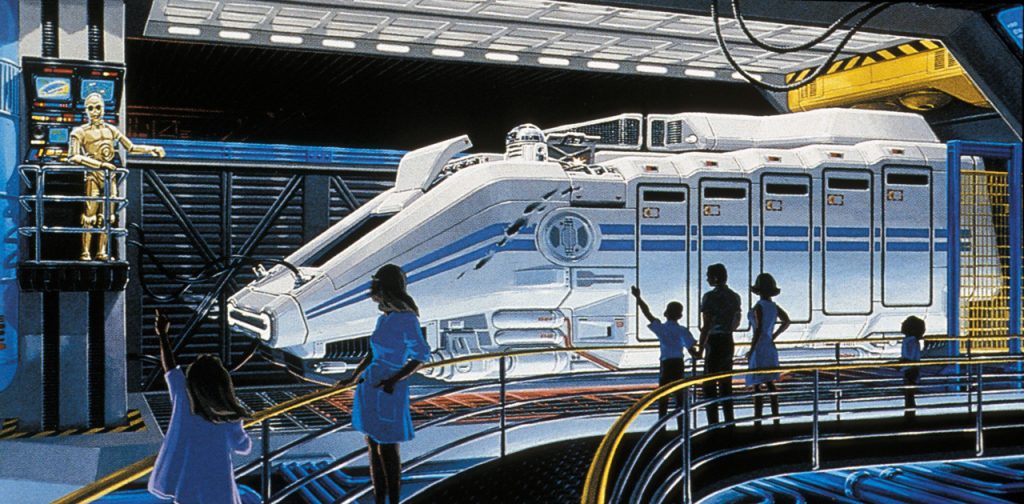
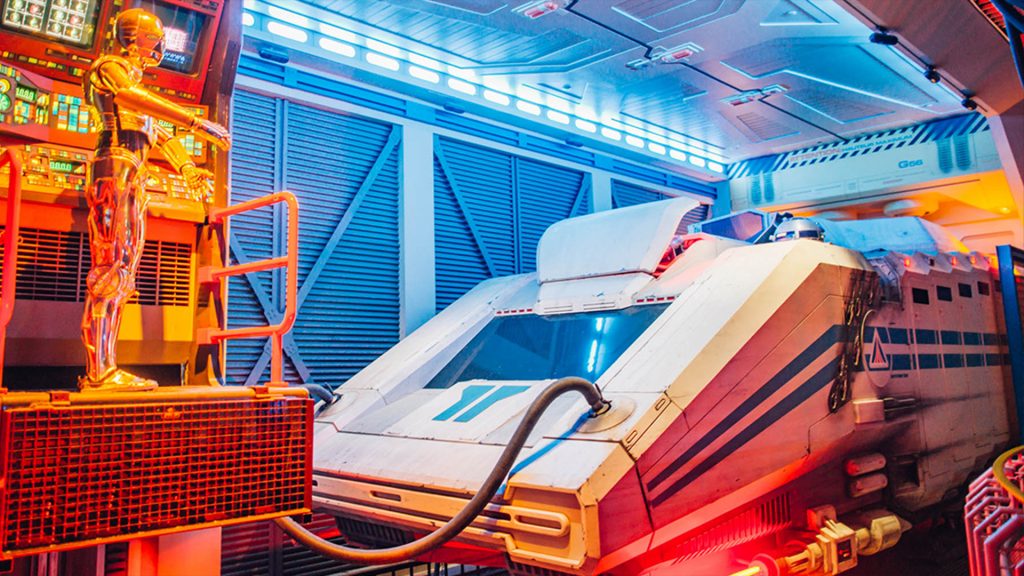
Star Tours utilized hydraulic motion base cabins featuring six degrees of freedom, including the ability to move 35 degrees in the X-Y-Z plane. The simulator was patented as Advanced Technology Leisure Application Simulator (ATLAS), designed by Rediffusion Simulation in Sussex, England. The Rediffusion ‘Leisure’ simulator was developed for a much simpler show in Canada called “Tour of the Universe”, where it featured a single entrance/exit door in the rear of the cabin and a video projector. The Disneyland original Star Tours was equipped with four simulators, while the shows in Tokyo Disneyland, Disneyland Paris, and Disney’s Hollywood Studio each had six motion bases.
In 1988 Hughes Aircraft bought Rediffusion and the company became Hughes Rediffusion Simulation. It was then taken over by Thomson CSF in 1994, who merged it with Link Miles and renamed the company ‘Thomson Training & Simulation (TTS).
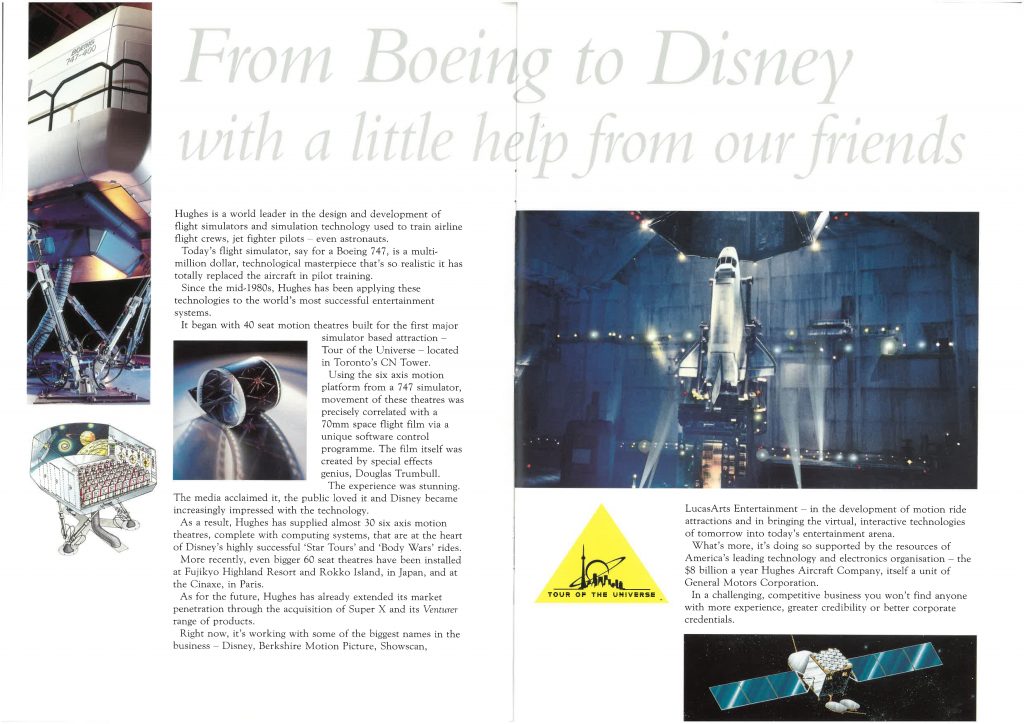
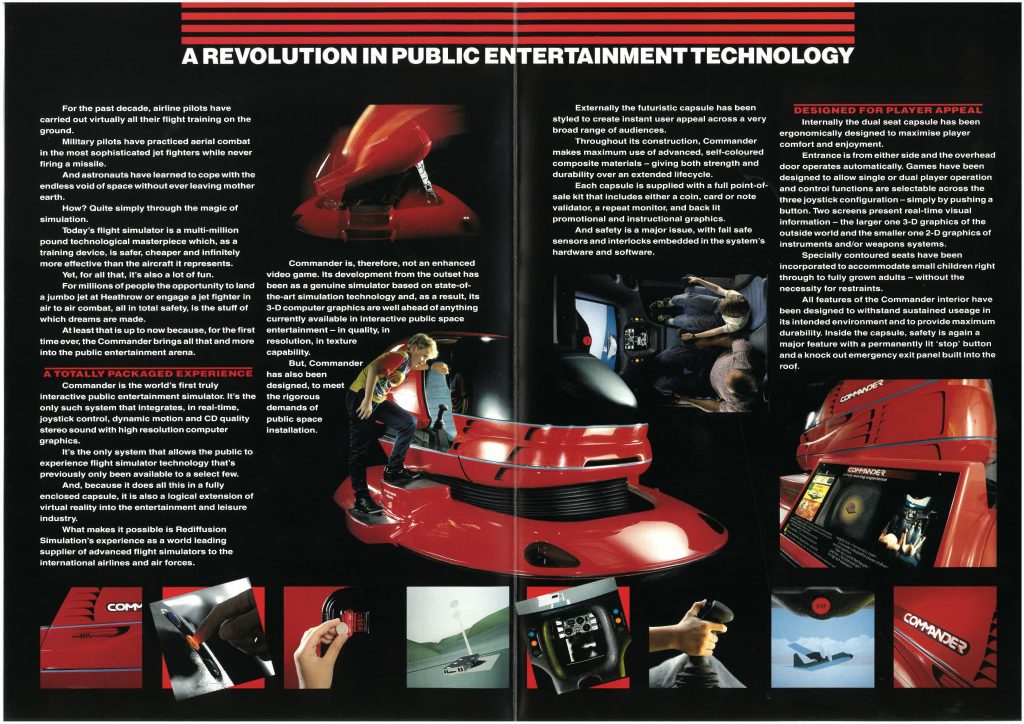
Andy and Terry initially met when they were both working for a company called FKI. Andy had joined FKI back in 1983 and was responsible for managing and growing several operational cost centres while Terry joined in 1993 as the Operations Accountant. They worked together for 4 years until Terry left in 1997 to head up the finance department of a new start-up company called Assembly Industries (AI). AI had been set up to manufacture a 16 seat motion simulator exclusively for a company called Camber Entertainment. Following a period of growth – both organic and acquisition led, AI evolved into a group of companies called The AI Group where Terry became Group Finance Director in 2001 and subsequently Divisional Managing Director in 2004 of the entertainment division.
In 2002, The AI Group acquired the entertainment division of TTS and gained its own range of products to manufacture and sell, and in 2003 acquired Camber Entertainment as The AI Group looked to consolidate their position in the entertainment simulation marketplace.
Under the terms of the deal with Camber Entertainment’s US parent, AI Group secured an exclusive license to market, manufacture and develop Morphis ESP and Morphis 20 capsule simulators, as well as taking over the company’s current projects and work in progress. Along with assuming the responsibility for all service and product support of Camber Entertainment simulators including the provision of ride films and motion programmes, on a worldwide basis.
In 2004 Terry contacted Andy regarding joining the AI Group as Operations Director of their entertainment division and focussed on merging and growing the group’s Manufacturing and Service businesses which were separate limited companies and in separate buildings.
And in March 2005, Terry and Andy carried out a management buyout of the simulation division of AI Group. However, as the simulation division of the AI Group consisted of 7 companies which often confused customers, they decided to consolidate all of the companies into one new Limited Company, and hence Simworx was born – a name which came from a brainstorming session!
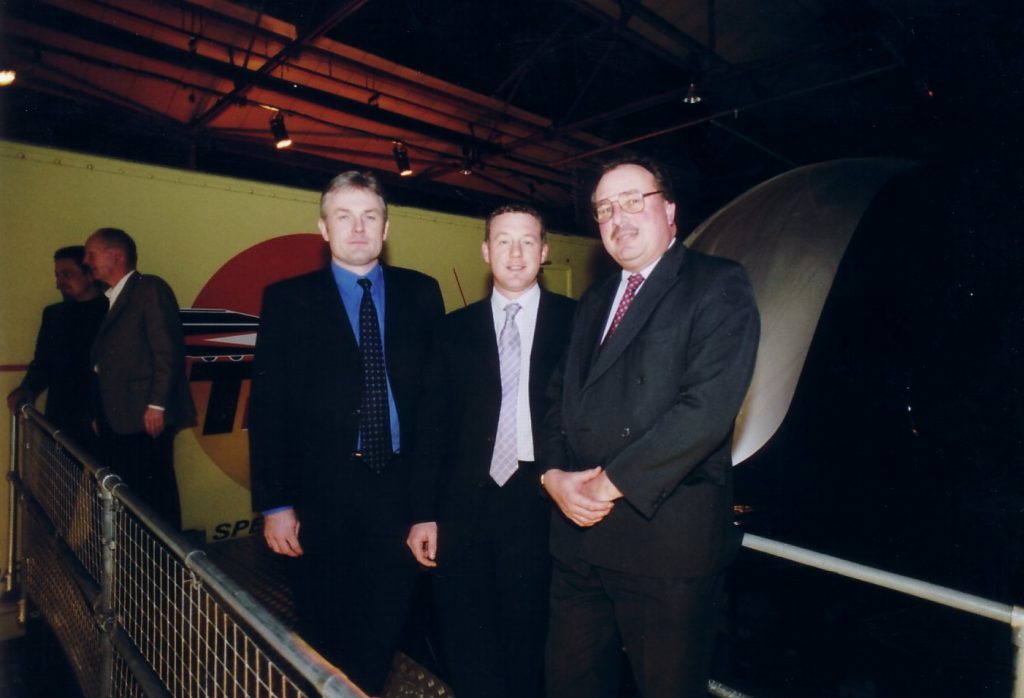
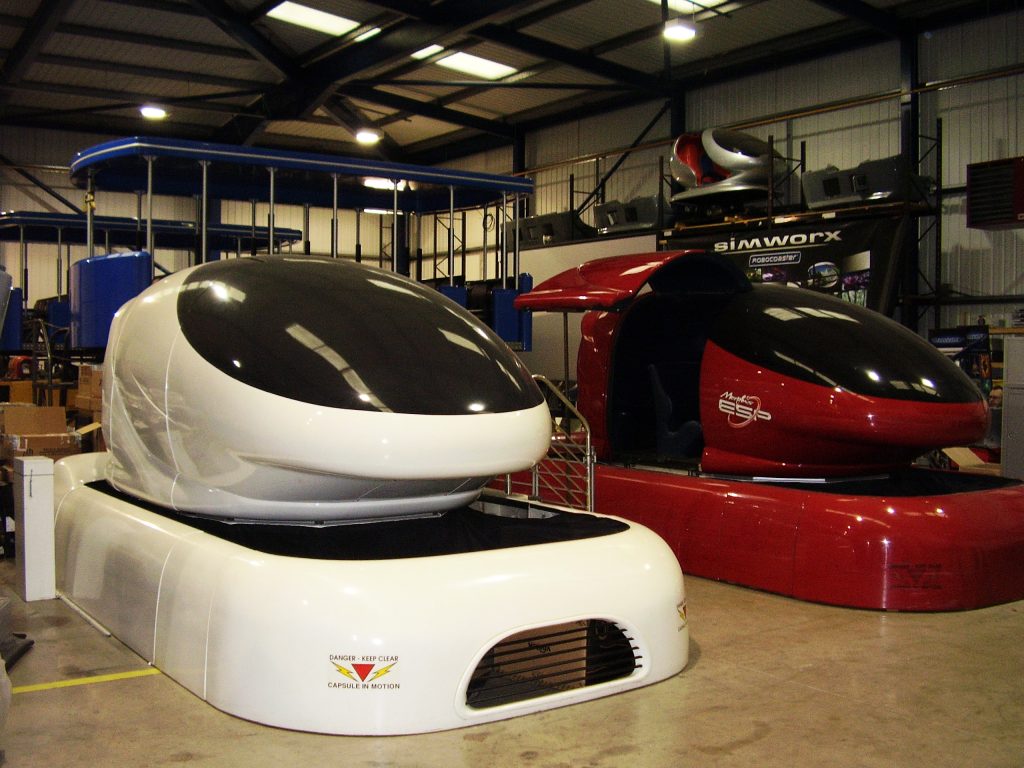
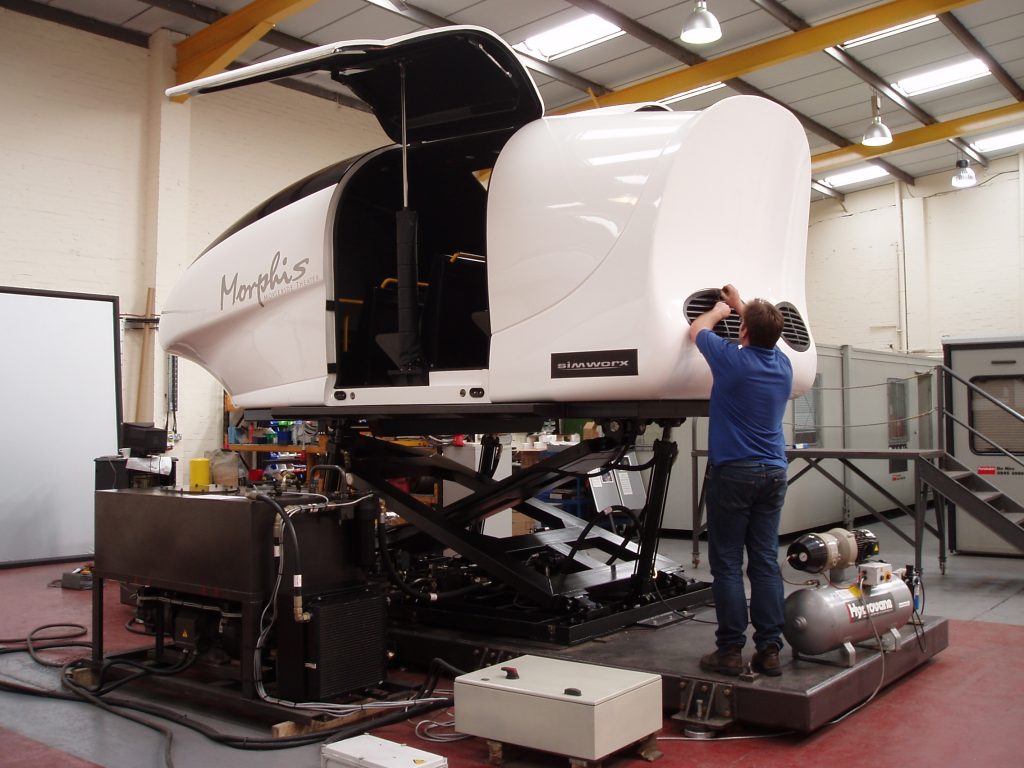
For a while, the pair continued to focus on Capsule Simulators, which as you will see from the history – had been very popular since the late ’80s with hundreds having been sold to a wide variety of different clients all around the world – typically museums, zoo’s and aquariums and the corporate promotion sector. However, one of The AI Group’s last projects had been a one-off custom design and build 60 seat 3D Special Effects Theatre for a large Air Museum in the USA. With a huge 180 degree 3D screen and projection system, cinema-style 1DOF motion seats with new special effects including aroma and wind, this was one of the first special effects theatres outside of Disney and Universal Studios and was the winner of a Museums & Heritage Award in 2004. A few months after the MBO in 2005, Simworx decided that given the critical acclaim that the attraction had received, to ‘productise’ this attraction, and hence the ‘Dimensions 4D Cinema” was born. The 4D Cinema offered significant advancements in audio visual technology versus the relatively small-sized screen that were restricted in the capsule simulation market, and most importantly – the ability to scale the product to suit small, medium, and large-sized operators was a key factor in unlocking the wider theme park market that The AI Group had not been prevalent to, due to the limitation of its product range.
In 2006, the company moved from a fairly old factory into a brand new building which provided larger high-tech production facilities, demonstration areas, and more office space to accommodate the growing workforce.
4D Cinema’s led a new revolution into the Theme Park sector, offering a new, indoor, family friendly attraction that is still a mainstay attraction for all theme parks worldwide.
Following the success of the 4D Cinema, Simworx leaned on its dynamic motion simulation roots, and developed the Stargazer Motion Ride, an 8 seat ‘open’ 6DOF motion simulator that by combining multiple units could accommodate small, medium and large sized venues and also the Cobra Motion Ride – a large 25 seat 3DOF motion simulator. By the end of the decade, Simworx ceased production of the Morphis and ESP Capsule Simulators to focus on its far more technically advanced, newly developed products that had opened up a larger worldwide market.
In 2013, the company developed yet another attraction which harnessed all of the technology that it had utilised to date – large dynamic motion platforms, special effects, huge 3D projections screen and added a new element – track based motion. In July 2014, the company’s first Immersive Tunnel opened at Movie Park Germany. Branded as ‘The Lost Temple’, the ride creates an unexplored world with prehistoric animals, dinosaurs and temples. Moving from a themed loading bay, guests board the vehicles which then travel along a short track to the main show area which incorporates a 5m high, 46m long, 360 degree screen. The guests are then at the centre of the action in a temple with dinosaurs rampages around them.
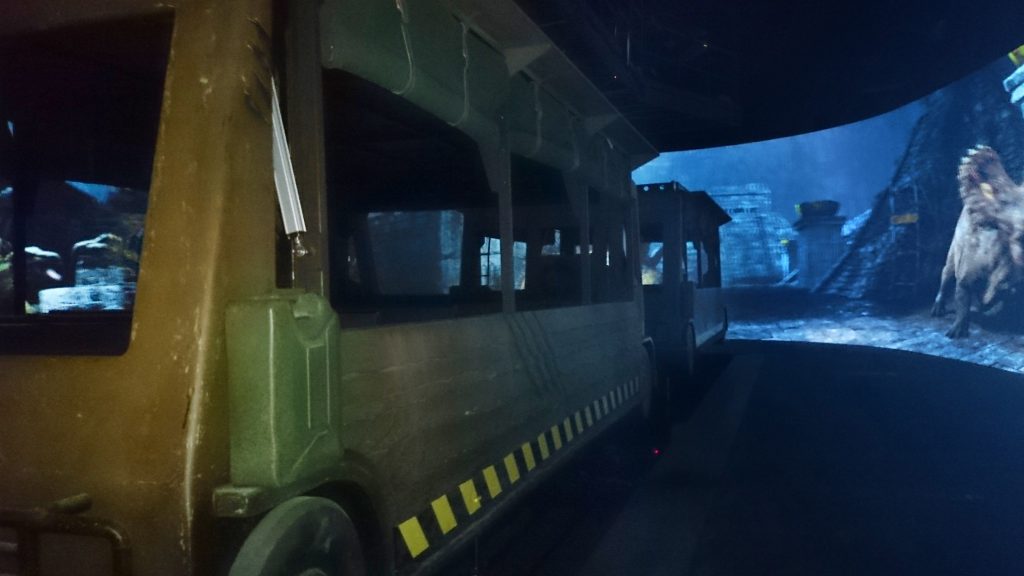
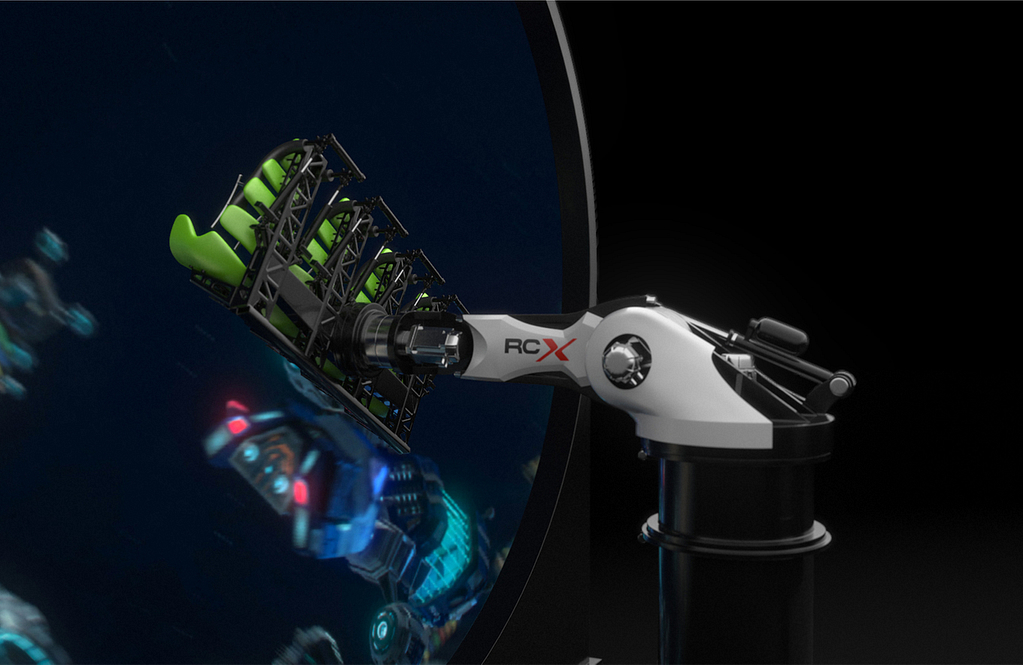
After working with Robocoaster – Warwickshire-based internationally recognised developer of intellectual property for use in passenger-carrying robotic technology and trackless dark rides – for a couple of years, Simworx, raised £4.5m in equity funding, in 2015, in a bid to acquire them. The acquisition would combine RoboCoaster’s pioneering robotics capability with Simworx’s motion simulation and audio-visual experience, allowing them to concentrate on the development and manufacture of a new generation of ride technologies and robot-based show solutions. In addition to the acquisition of RoboCoaster, they also used part of the funding to double the size of its production plant in Kingswinford, increasing its demonstration facilities and adding to its existing 30 employees by recruiting a further 20 new members of staff.
Simworx then went on, in 2016, to develop the ground-breaking Derren Brown’s Ghost Train attraction for Thorpe Park, collaborating with Severn Lamb, Figment and HTC on the project. Delivering three 60-seat motion-based passenger train carriages and 110 metres of train track, each train carriage was fitted with 60 HTC Vive headsets, an array of special effects and a vibrating floor. In the pre-ride area of the attraction, they also supplied effects like smoke, sound, AV projection, and a cutting-edge motion base capable of a 35-ton lift. The ride has since gone on to win 5 European Star Awards.
In 2017/18, Simworx continued to develop innovative products, this time addressing the growing FEC market. They introduced their 4DVR, Immersive Adventurer & 360 Cinema products, as well as developing Paradrop for Frontgrid. These products require a smaller footprint and are at lower price points making them attractive for smaller venues.
In 2019, saw Simworx heading back to the Theme Park sector, with 3 major new product launches : The year started with the launch of the company’s world first “Immersive Superflume” which combines a traditional water ride with an Immersive Tunnel motion and AV sequence. Shortly afterwards saw the launch of its first ‘Mini Flying Theatre’ installed at Baoson Wildlife Park in Vietnam and then in September & November the ground breaking AGV Dark Ride was launched at IAAPA Expo in Paris & Orlando.
Now in 2021, Simworx has consolidated its position as one of the world leaders in the design, development and manufacturing of high quality media based attraction. With more new products in development to be launched later this year – as well as having a rich history, the future is looking even brighter!
